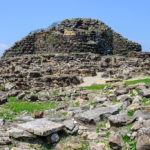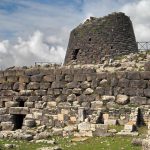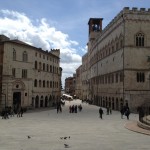Exploring the archaeological treasures of Sardinia dating back to the Bronze Age
Sardinia, the textile art of Samugheo
Encounters with the Music of the Loom!
As a tourist looking for wonderful places to visit Sardegna was always in view for its beautiful beaches and clear, salty waters. Not being a sun-and-sand girl, I never even considered Sardegna – or ‘Sardinia’ as we Americans call it. Then Italia Slow Tour offered me the pleasure of a cultural tour of Samugheo as their ambassador! What incredible good fortune for me! In my mind’s eye Sardegna was a small, brown island with a pretty coastline offering warm sands and sweet island drinks. But I was totally under-informed and utterly rocketed to reality by the skilled guidance and unbounded enthusiasm of our host – Alessio Neri of Fare Digital Media.
Thanks to Samugheo Story and La Memoria Storica Soc. Coop.
Cagliari & road to Samugheo
Alessio’s many considerations included time to tour the island’s capital – Cagliari – through booking me early and late flights to and from the island. The large port city with its historic walled center on a hill was a delight to explore.
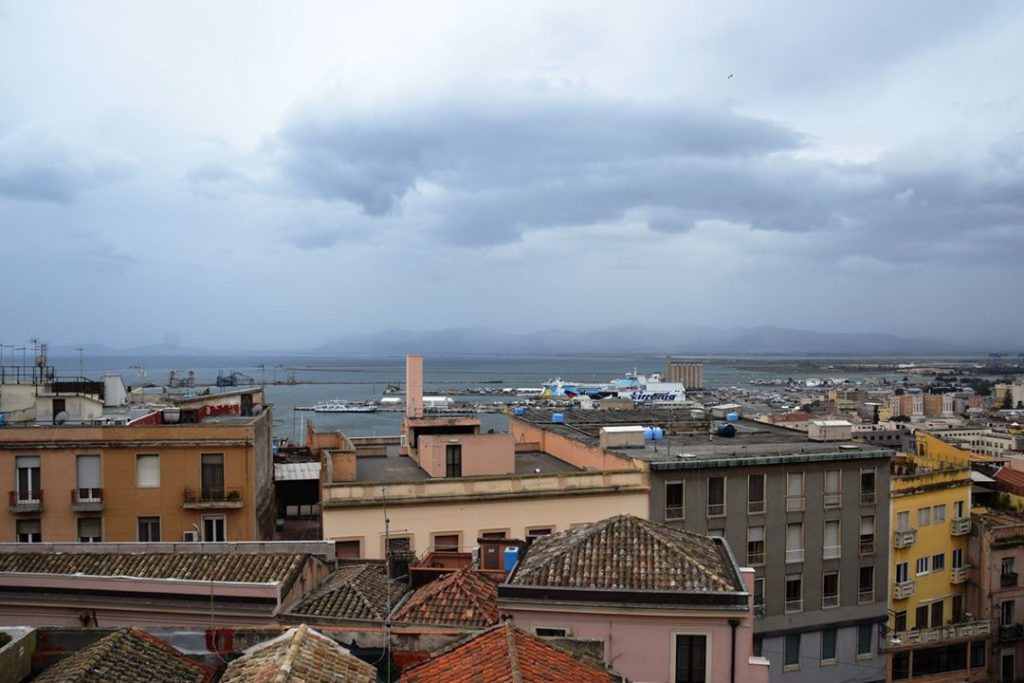
The Bastione Saint Remy, Built in the 19th-century on top of the 14th-century walls surrounding the Castello district of the city. The stone is Pietra Forte – a locally quarried white and yellow limestone. There are 140 stairs leading from the Piazza Costituzione to the expansive Umberto I terrace that offers a fabulous view of the port and city.

And – after a one-hour ride through the green Sardinian countryside – he gave me enter into the ancient traditions alive in the craftsmanship and creations of the artisans in the hill town of Samugheo.
Charming for its winding streets and wandering small dogs – color-splashed everywhere by the lemon and orange trees crowding its urban vistas – Samugheo sparks awe and wonder with its magical stone walls – bound by the skills of the locals who built them rather than the mortar needed by lesser artisans – and offers hunger-quenching, Michelin-quality feasts cooked and served by Luciano and Fabrizio – the proprietors of ‘A Ruota Libera‘ – the B&B where our small group stayed. Samugheo – with its pretty name born from the Catalan title of its’ founding church – the embryo of every Italian town – when Sardegna was in Spanish possession – is an absolute best pleasure!
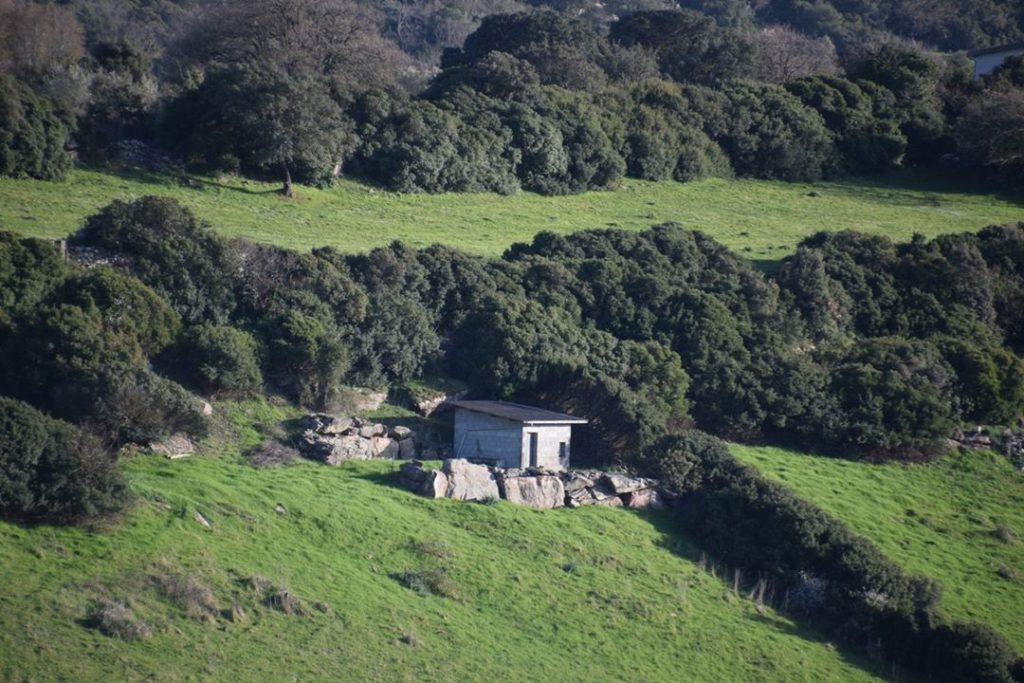
On the road to Samugheo – the beautiful and lush countryside! 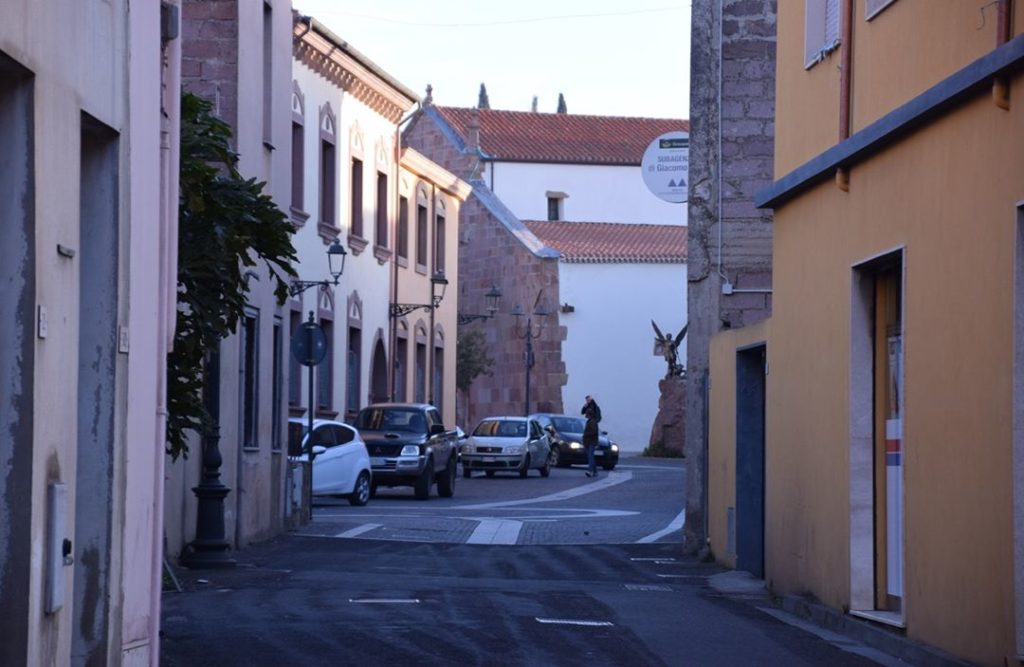
Samugheo, the main street through the small town, Via Umberto 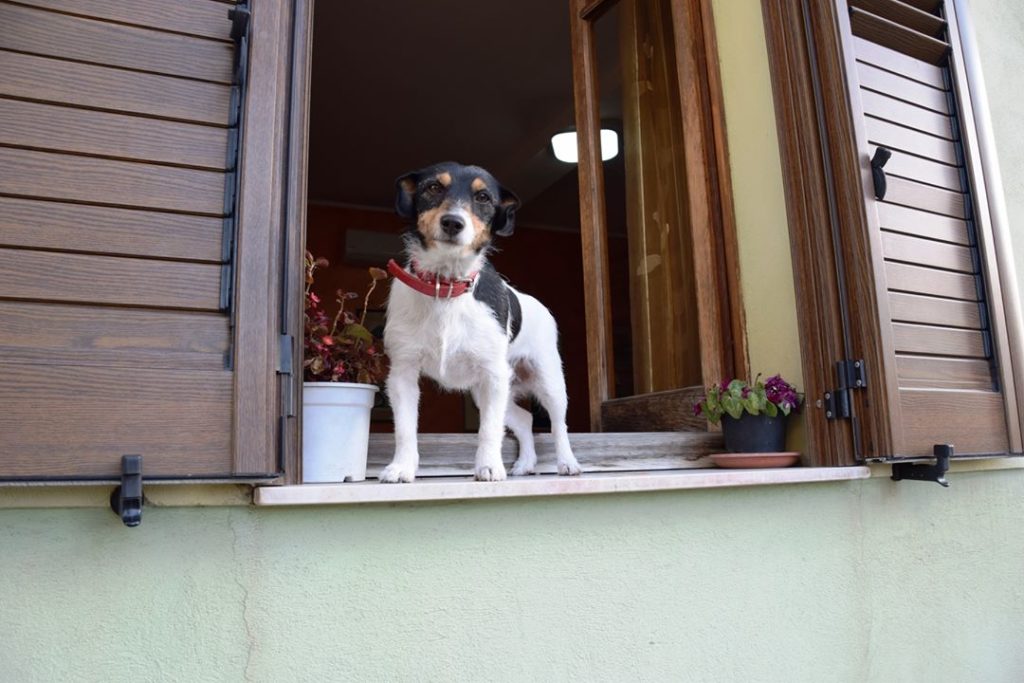
Samugheo, a curious and friendly dog in a window! 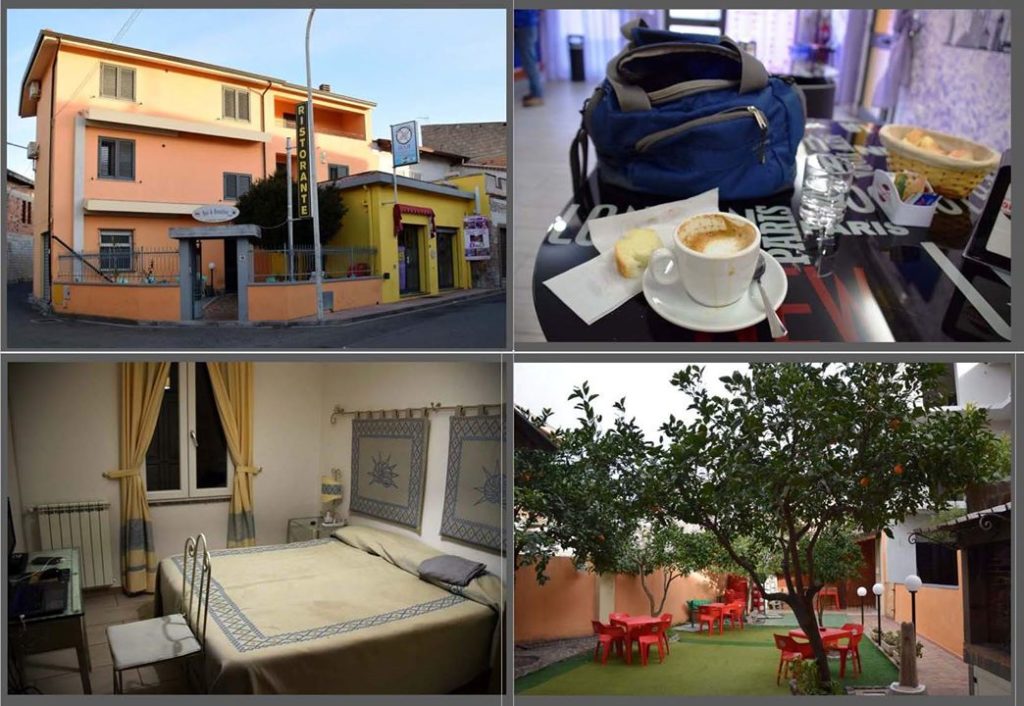
9. Samugheo, Our bed and breakfast A ROUTA LIBERA 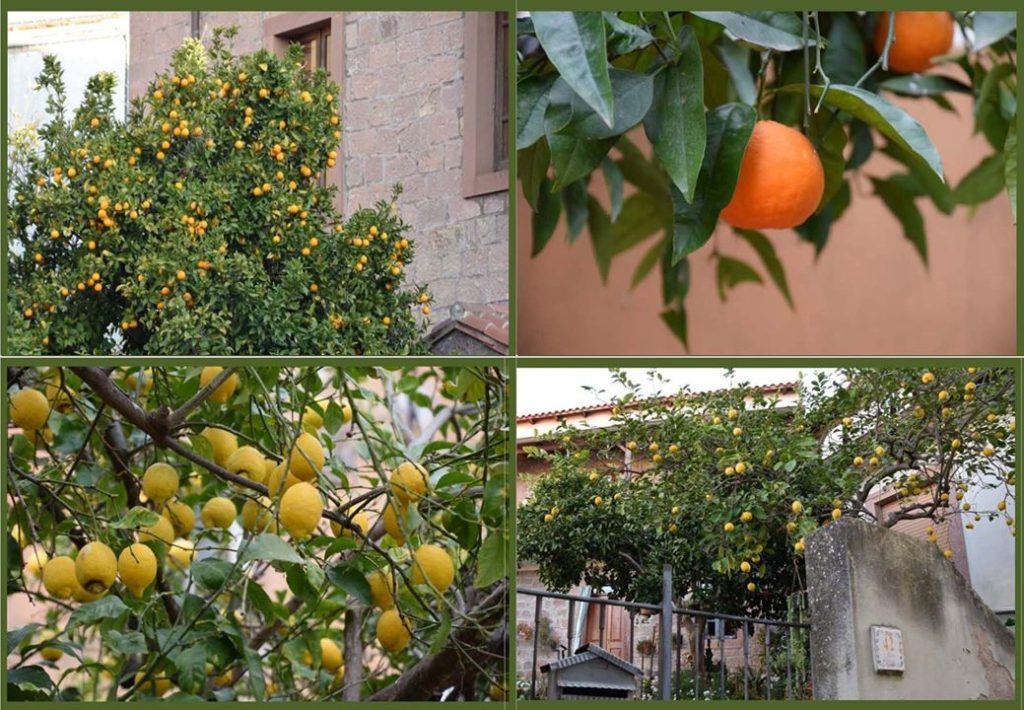
Samugheo, lemon and orange trees abound everywhere throughout the town 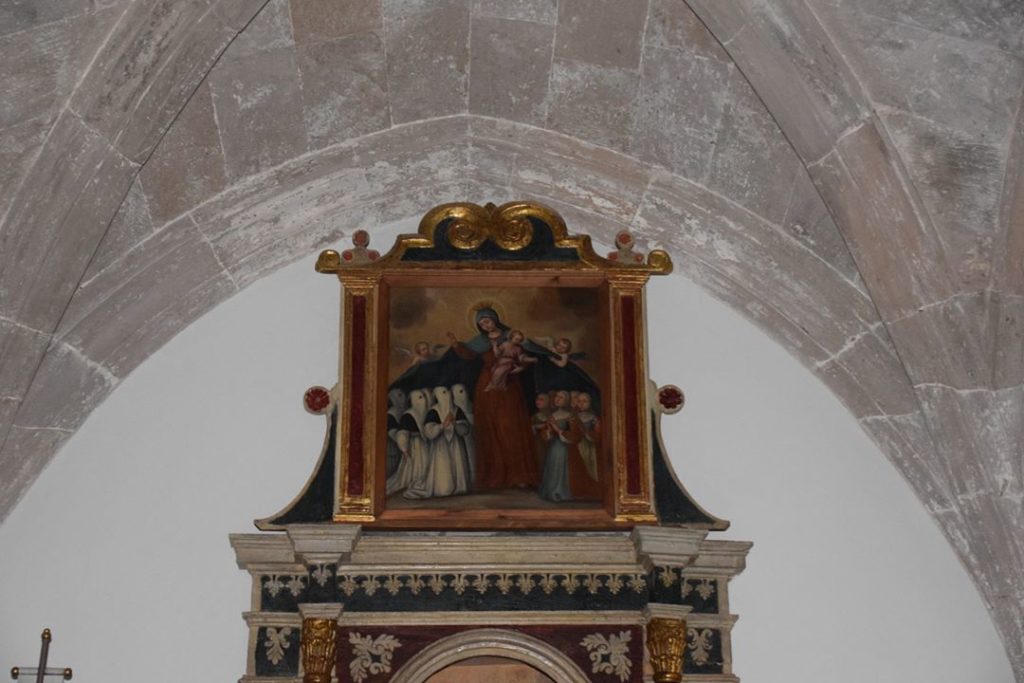
Samugheo – Chiesa di San Sebastiano Martire – this is a Madonna della Misericordia
Samugheo: arts & crafts tradition
But the true rock stars of this village are the artisans. In Samugheo live women and men whose art and efforts preserve and celebrate the culture and traditions of Sardegna. The tessitrici and tessitori weave the hues and imagery of the history of Sardegna into the carpets, linens, and cloths that they craft by hand. Their fiber creations dress the homes and artifacts of everyday life in this Italian island province.
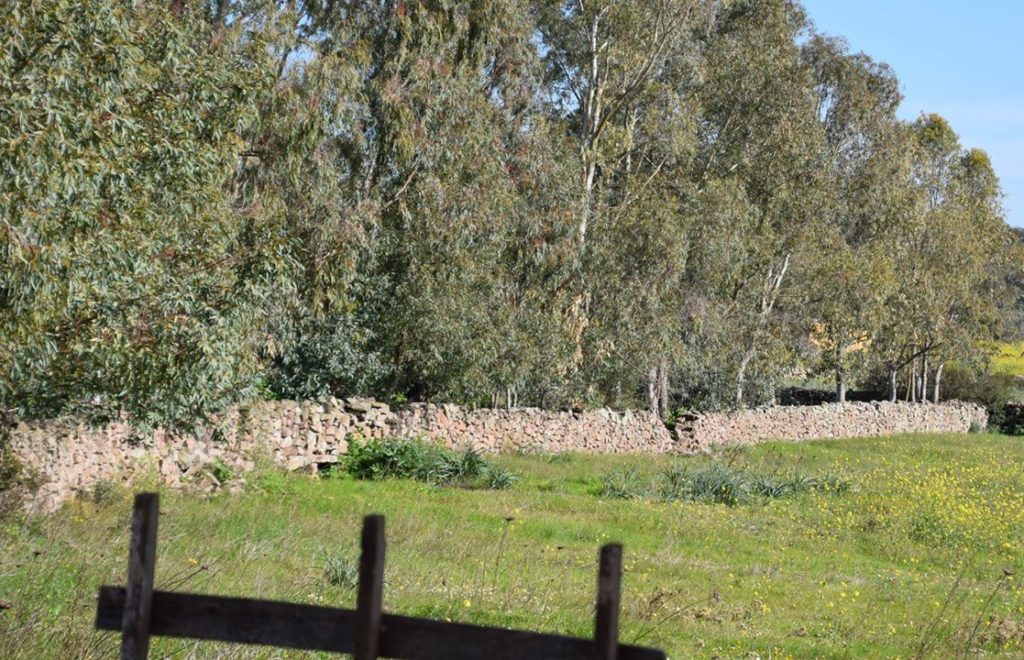
About the mortar-less walls of Samugheo. These types of walls reflect the building techniques of the walled structures of Su Nuraxi di Barumini. There, in the comune of Barumini, one finds a defensive complex – called a nuraghi – built in the 2nd-century BC. Because the structure is culturally unique and ancient – from the Bronze Age – it has been deemed a UNESCO World Heritage Site.
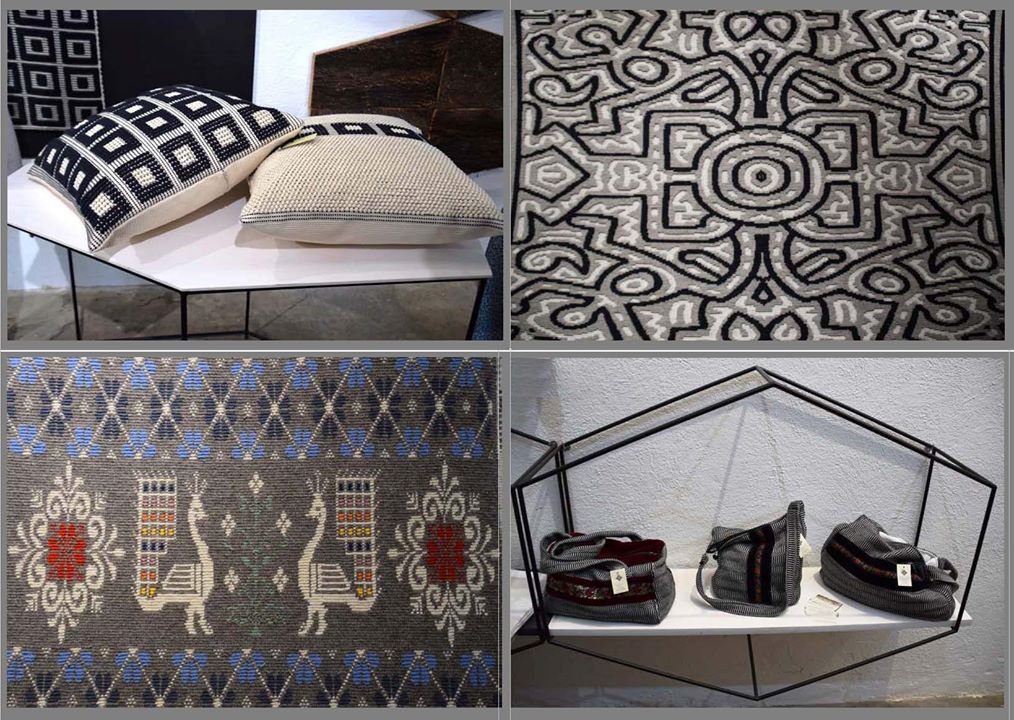
The Cantina di Samugheo – a defunct winery is now used as an exhibition venue for the textiles artisans of Samugheo. These are some of their many hand-loomed creations. see the pic above – Clockwise from the top left: cushions woven with a modern geometric pattern; a wool carpet which resonates the work of American graffiti and pop artist Keith Haring (1958-1990); three bisacce – a term that traditionally identified a cloth saddlebag – the black and white patterned fabric is traditional to Sardinian bags; the peacock border of a wool carpet – the peacock is an ancient symbol of immortality in Sardegna and hails from the 4th-century – the Byzantine era. The bird is not endemic to the island.
The ‘Museo Unico Regionale di Arte Tessile Samugheo‘ aka MURATS
My cultural adventure began at the fiber and textile museum – the Museo Unico Regionale di Arte Tessile Samugheo – best known as MURATS. This museum is fabulous and has an incredible collection of Sardinian textiles gathered from the island and reflecting the traditions and innovations across the centuries – in meaning, design, looms and hand-wrought manufacture.
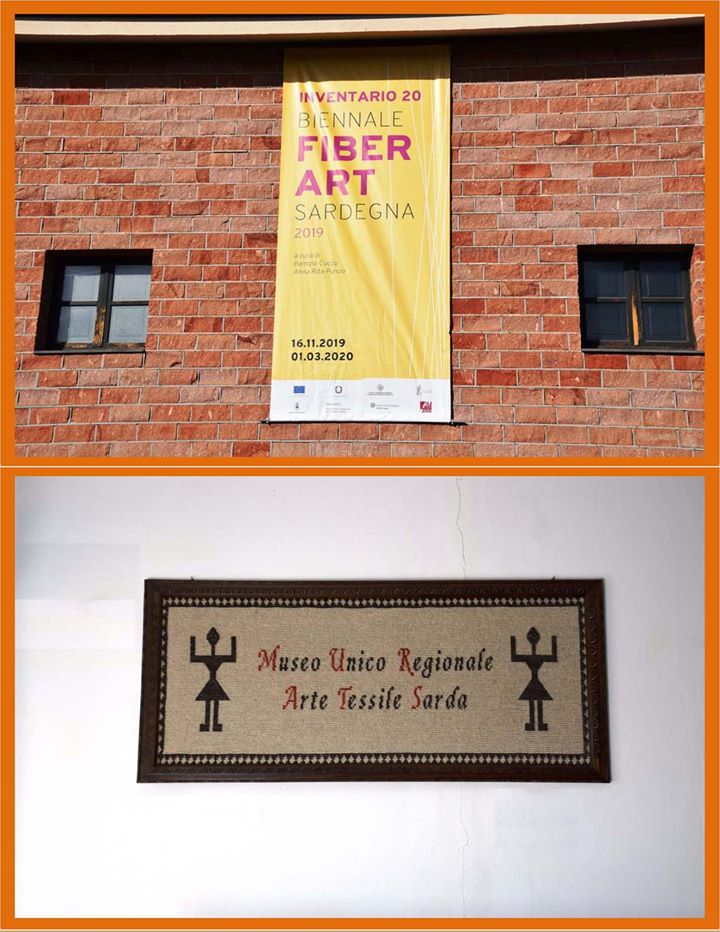
MURATS – Entrance 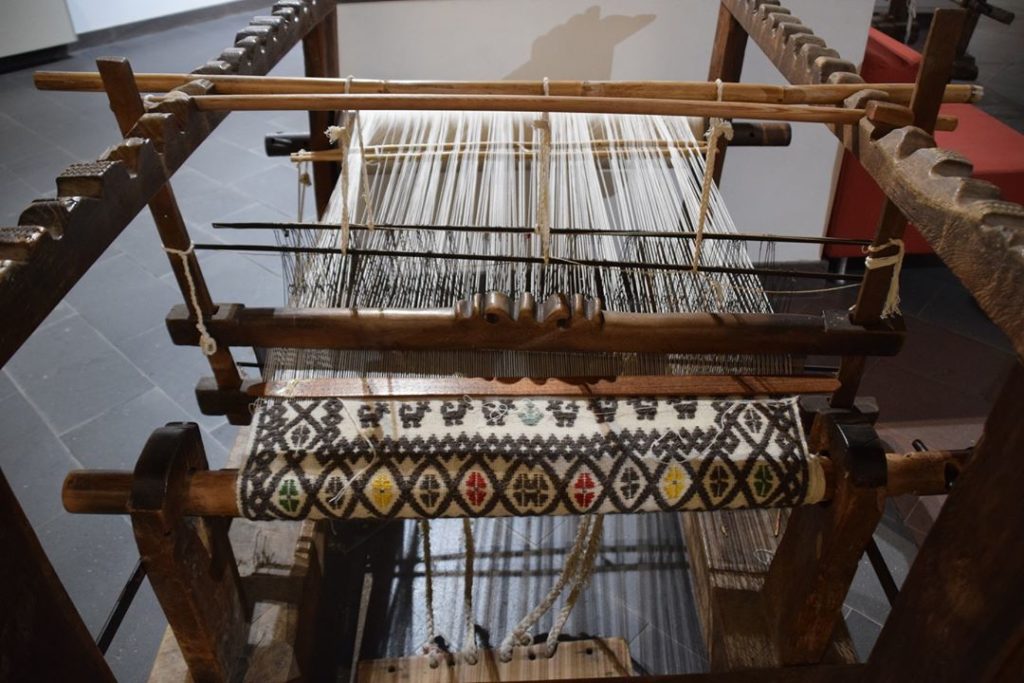
Traditional horizontal loom 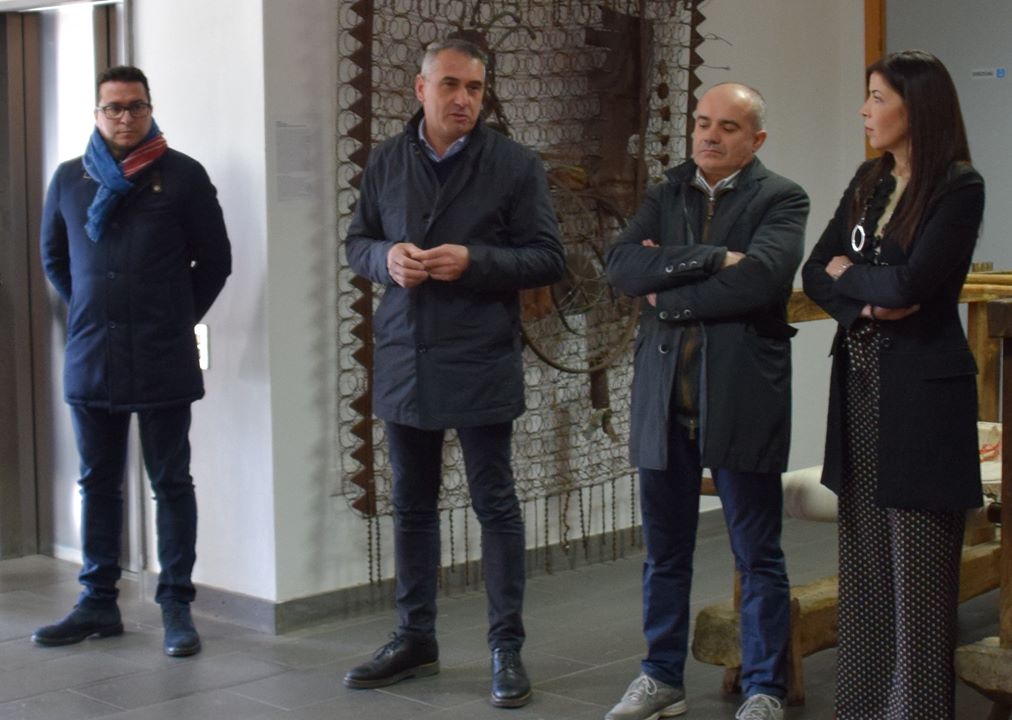
MURATS – the mayor of Samugheo – Antonello Demelas
Here is housed the Samugheo story of textiles – the art of weaving fibers into usable and beautiful wares for the home and person. The museum has two floors. On the top floor the ‘tessile’ narrative begins with the local wools – dyed and hand-woven to make the orbace – a richly colored, thick and durable, coarse-textured cloth used for the everyday clothing of the people. The story continues – painting its words on the museum walls and display tables voiced by the artifacts of life where meaning is woven into the fabrics of the bisacce (bags), copricassapanche (chest covers), and coperte (blankets) – necessary utilitarian wares made into art. The tale then halts where the colors of warm earth are woven into the unique ‘tapinos de mortu’ – carpets on which were laid the bodies of the beloved dead. On these ‘drappo funebre’ – burial cloths – are the Sardinian symbols of the cycle of death and rebirth – reminders that the permanence of death is overcome by the tenacity of life.
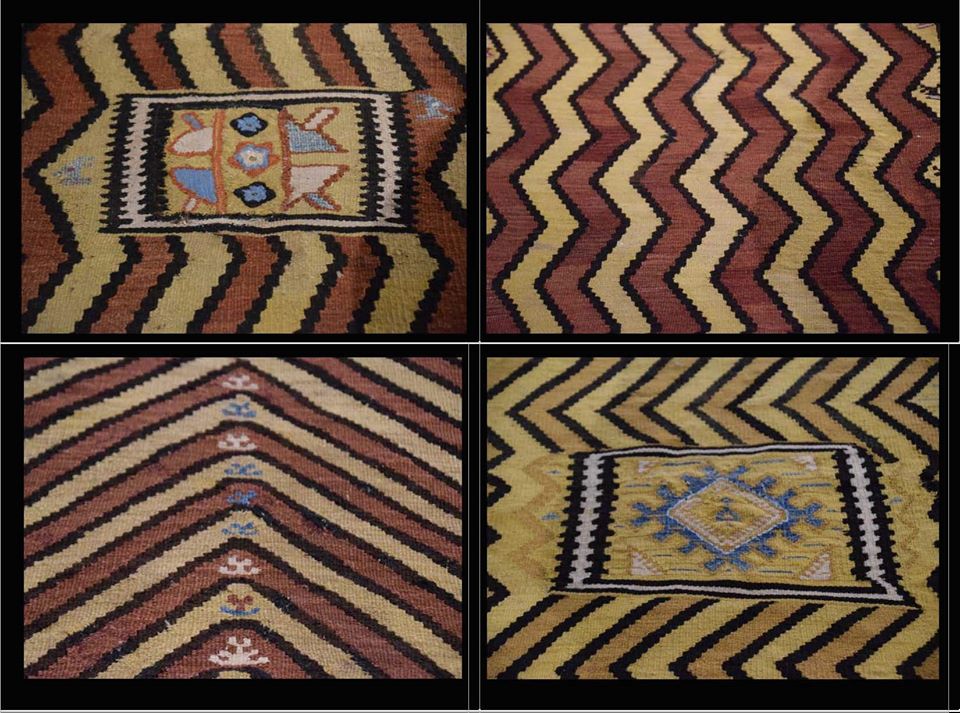
See pic above – Some details from the museum’s collection of ‘tapinu de mortu’. We were told only eight of these carpets exist and the museum has five of them! The burial cloths or palls (drappo funebre) date from the late 18th-century to the early 19th-century and all come from the town of Orgosolo. The Tapinu de Mortu – carpets on which one placed the dead – are peasant weavings that were made on a vertical loom. They were only owned by the wealthy who would loan them to other townsfolk for three days for funerary rites after which they were returned. The carpets are rectangular – long and narrow as would suit a body being placed on them – and were dyed with vegetable materials. They were hand-made until the mid-19th century exclusively in Orgosolo. This nearby town used to be called the ‘village of murderers’ because of its association with banditry and crime. Perhaps this is why these carpets were so necessary there!
As the living move forward – preserving and carrying on the textile arts – the Samugheo story evolves. Down the stairs – on the ground floor of the museum – the narrative resurrects. On the floors, walls and ceilings is the new fiber art – the expression of the contemporary Sardinian perspective woven with fibers both traditional – like wool – and innovative – such as hand-made papers. The voice of the new generations begins the Samugheo story anew.
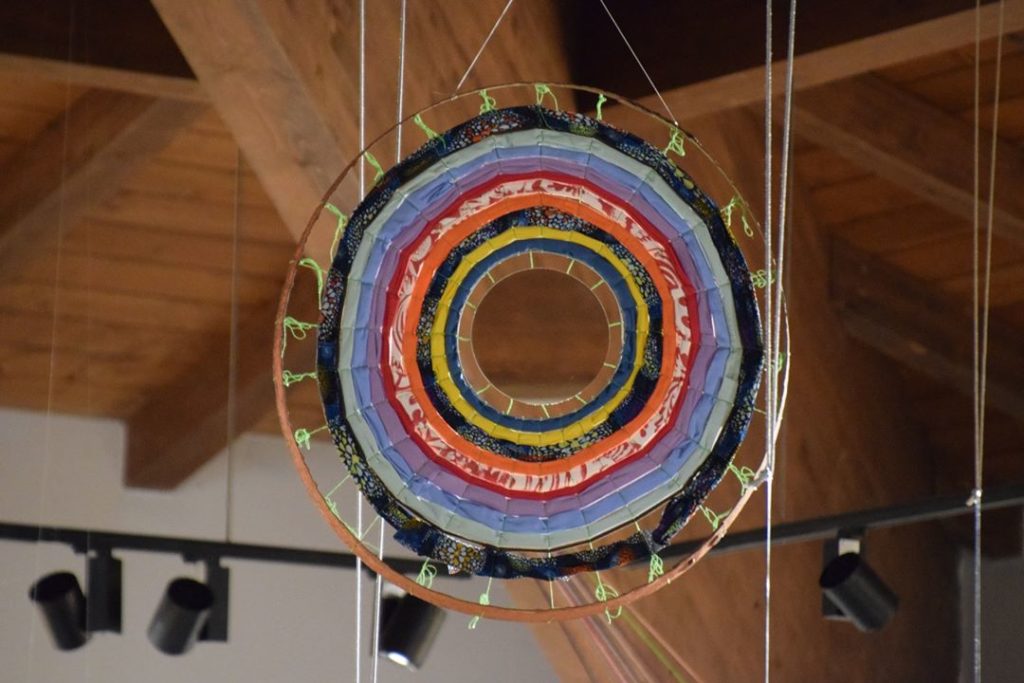
The next leg of my adventure unfolded in a defunct winery that now serves as the venue and exhibition hall for the display of the hand-woven cloths, carpets, and linens from the laboratories and factories of Samugheo artisans. The Cantina di Samugheo was filled with colorful creations and each craftsperson was on hand to tell us the meaning of and motivation for their art.
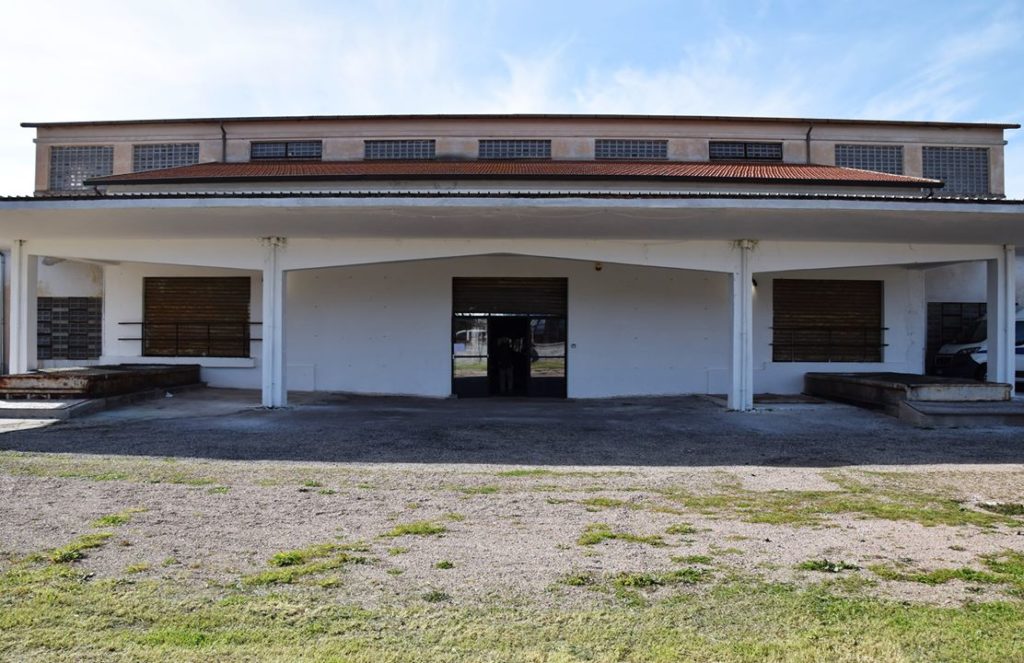
The Cantina di Samugheo – The old winery 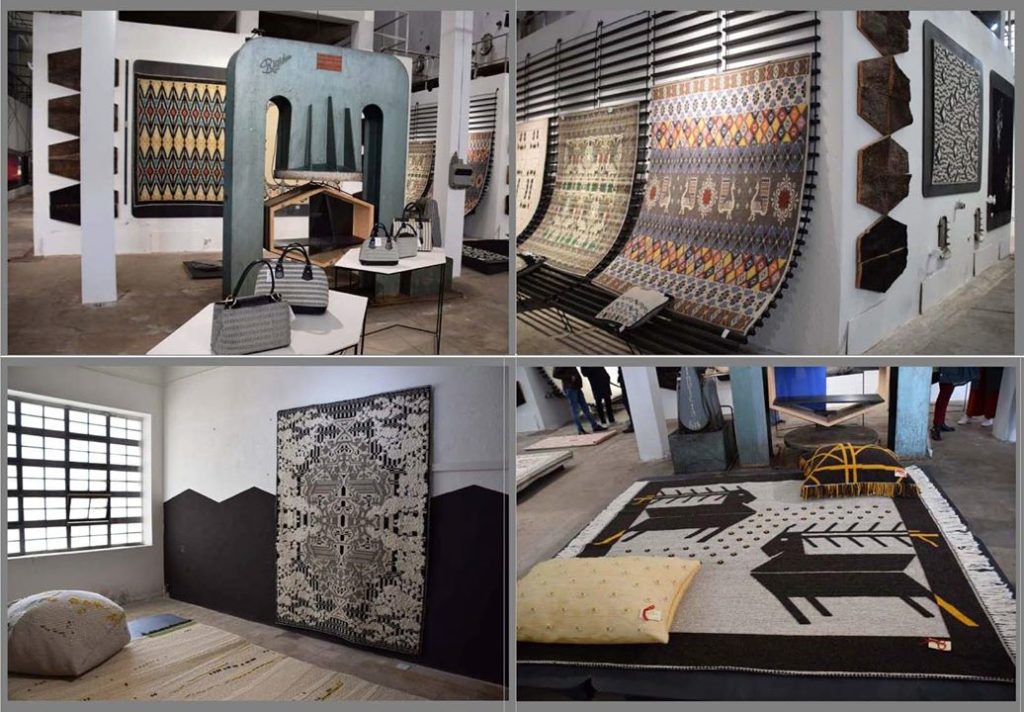
Some of the many varied and exquisite creations by the local artisans 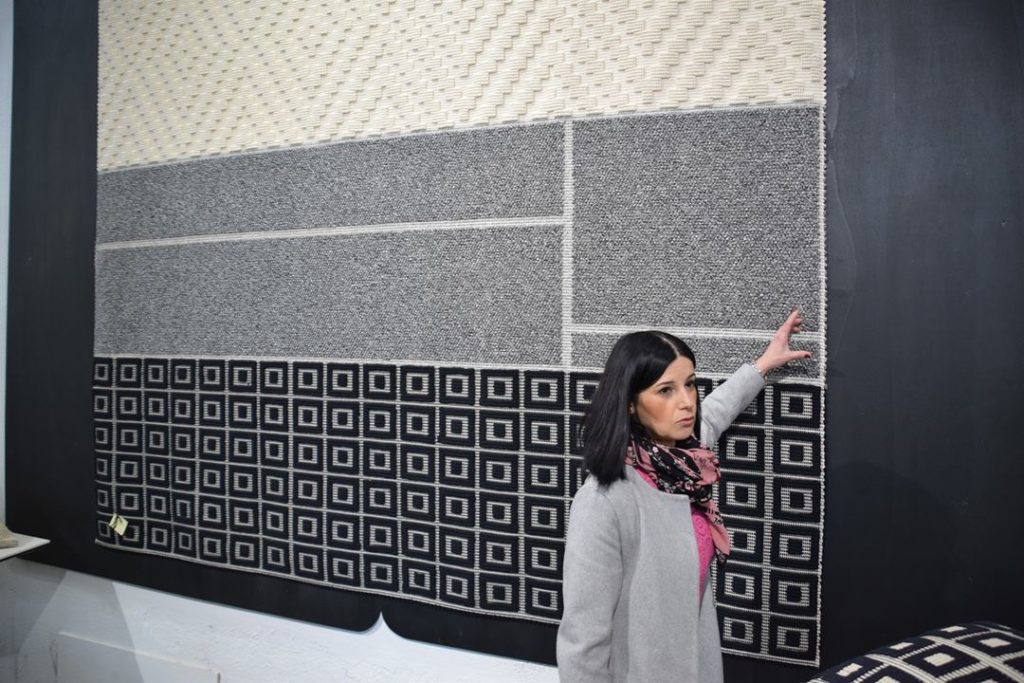
Marcella Sanna of Tessile MeDusa discussing some of her textiles – all of which she designs and weaves by hand
When the tour of the textile filled winery was over we were all served lunch. The menu of traditional local foods was provided by the Agriturismo da Lino – owned by Alberto Frongia – and locally produced wine was provided by the Mandrolisai vineyard with sommelier, winemaker and scientist Emanuela Flore there to introduce us to the grapes and vintages. The meal was exceptional and I have to admit that I had no idea there were so many types of delicious Pecorino cheeses. My experience with Pecorino is an American one where all we have access to is the dry, pungent formaggio that is grated onto pasta. But in Sardegna – the home of this glorious cheese – there are many renditions – one of which – a creamy, sweet, mild-flavored composition – we had for lunch!
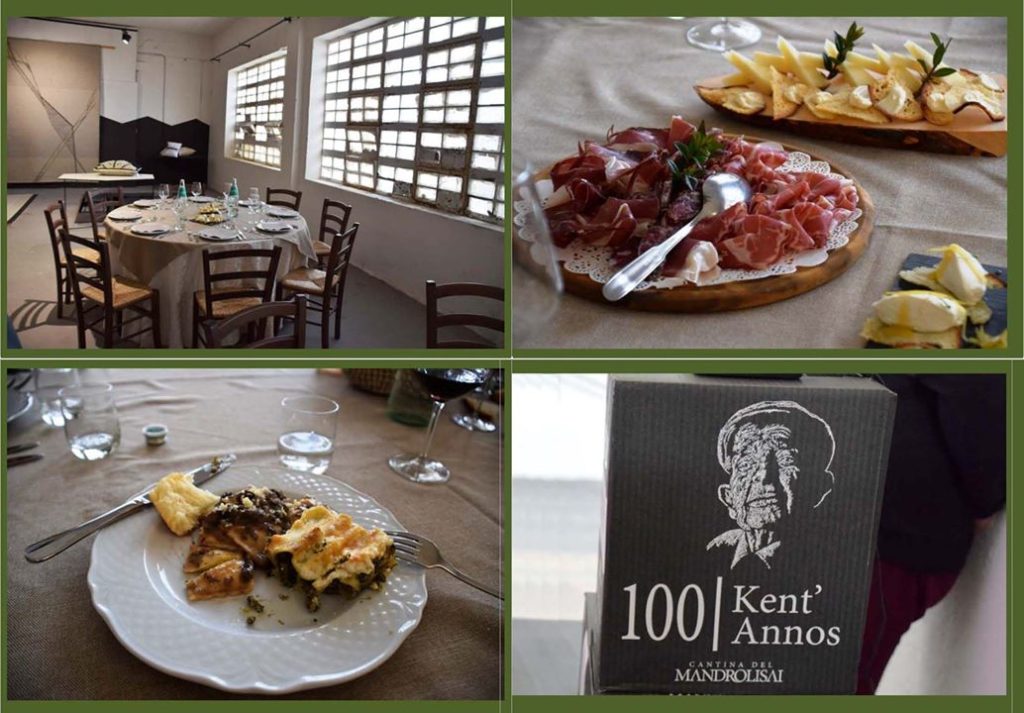
One splendid meal and three espressos later – dopo pranzo – the cultural tour resumed as our small group visited the laboratories and workshops of three Samugheo families.
Arte Tessile di Sanna Anna Maria
The factory Arte Tessile di Sanna Anna Maria was founded in 1968 by Anna Maria Sanna and is now operated by her sons – Giuseppe and Graziella, and daughter-in-law – Luigia. The workshop with hand-worked looms, specializes in textile products for the hotel and hospitality industry. To meet the requirements of the fire laws which govern these industries, the family has had to develop techniques for working with synthetic threads. The fabrics they produce which are crafted into bed linens, upholstery material, and cloth for drapery are exquisite. Had I not been told the materials were polyester I would never have guessed it. The weight, feel, and look of this hand-woven cloth is more like heavy linen and fine cotton than synthetic.
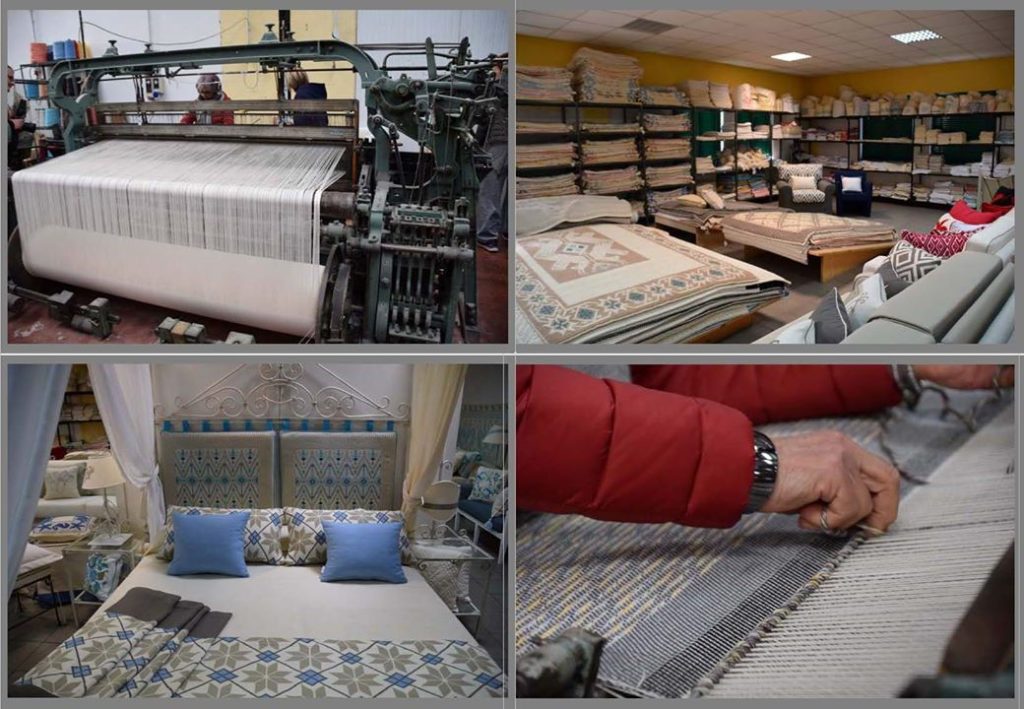
See pic above – being worked by Luigia and another weaver. Top right: some of the many creations made for the hospitality and hotel industries. Bottom right: the hands of a weaver working the threads. Bottom left: some of the beautiful bed linens on display in the showroom.
SARTAPP Centro Tessuti Sardi
SARTAPP Centro Tessuti Sardi was founded in 1978 by Basilio and Elisabetta Sanna. Basilio began his business humbly and to protect his precious first loom – the means to feed his family and on which his beloved wife wove their fabric – he parked his truck close by and slept in it. The burgeoning business is now run by Basilio and Elisabetta’s children – Carlo, Fabrizio, and Stefania.
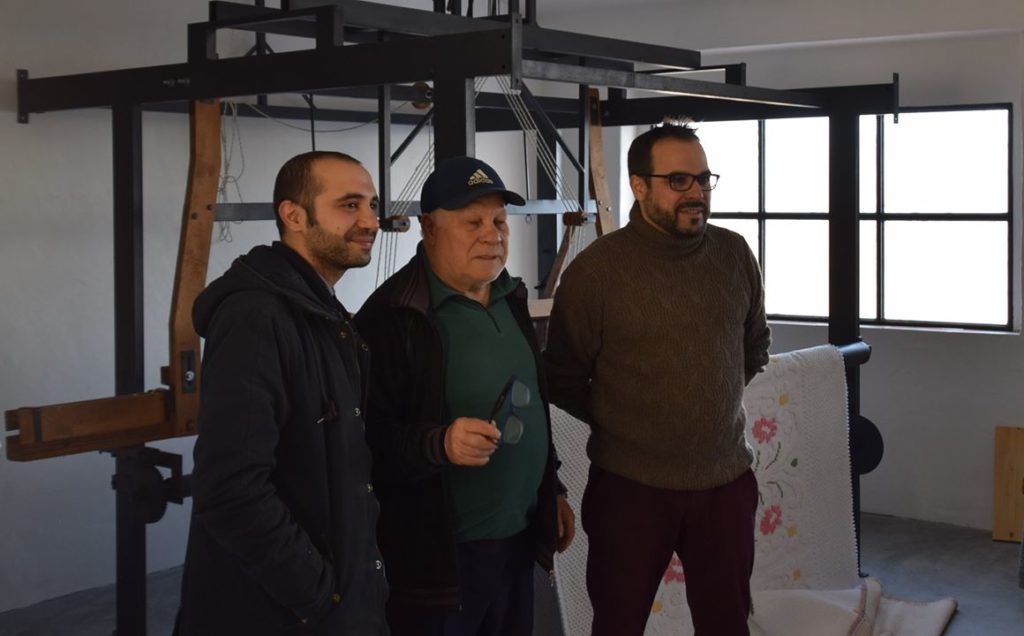
The men of SARTAPP! From the left Fabrizio, Basilio, and Carlo 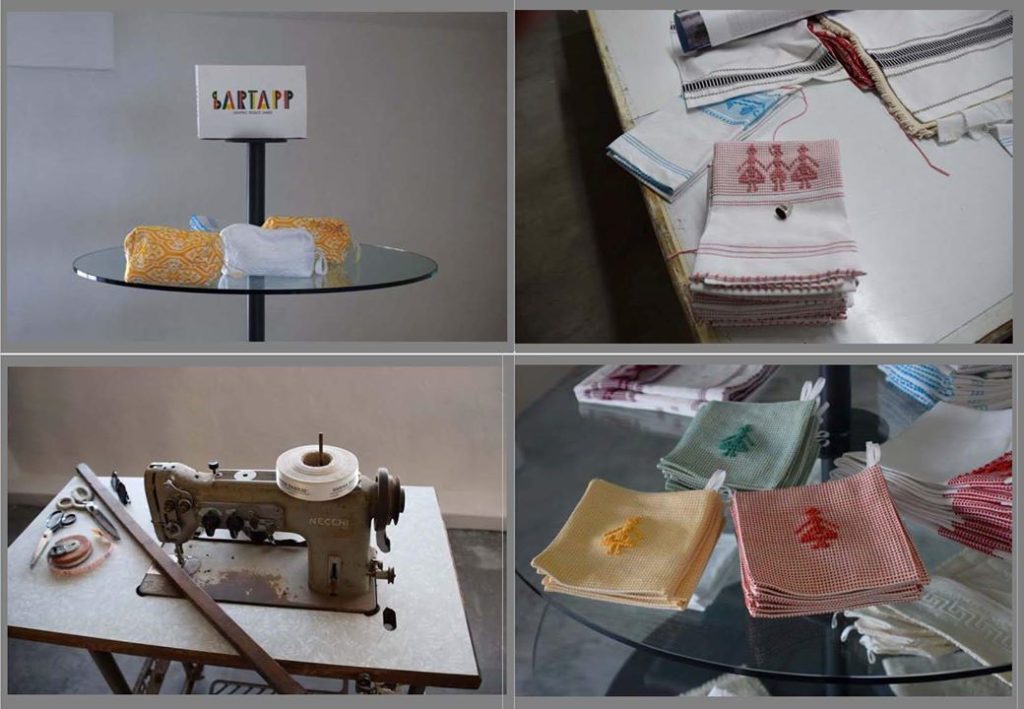
Some of the smaller, sundry creations of SARTAPP 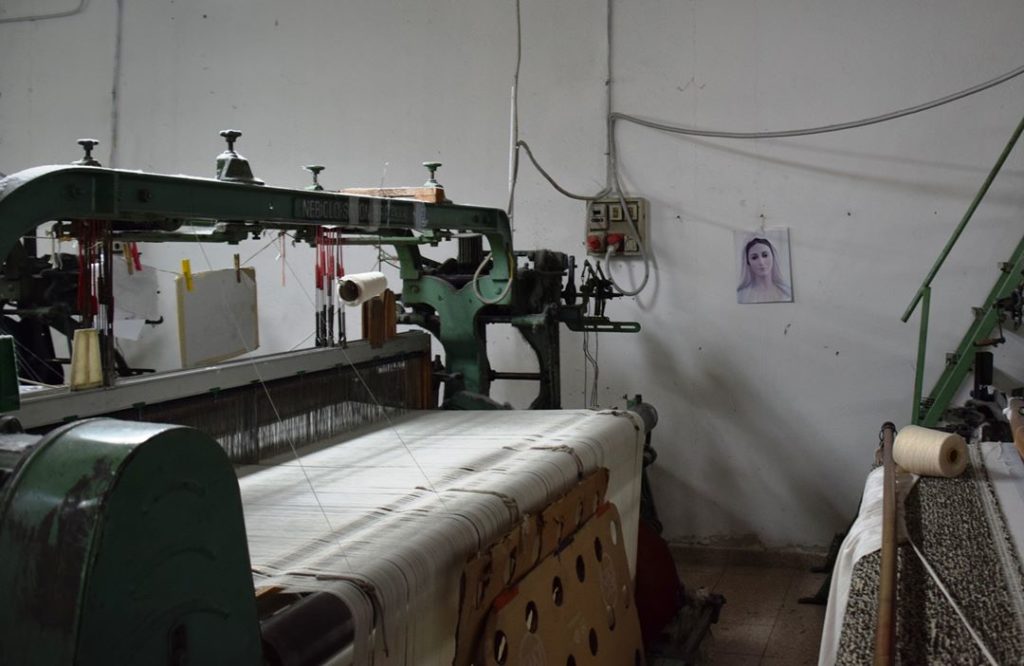
The Madonna of one of the weavers guarding her loom!
The family has an expansive operation and many (female) weavers. Each of the women who works for them enjoins the protection of the Madonna. An image of the Virgin Mary can be seen at each work station!
Their work is visionary and has attracted the attentions of designers and architects from outside Italy. I really enjoyed talking to Carlo Sanna about his designs and his upcoming book about the ancient pagan and Christian symbology and beliefs of Sardegna – which he will be co-authoring with a Catholic priest. Carlo is very interested in weaving the iconography of the Sardinian religion into his modern creations and amalgamating the commonalities between paganism – as seen in his designs – and early Christianity – as seen in the traditional motifs of Sardegna – to both preserve and reflect their historicity.
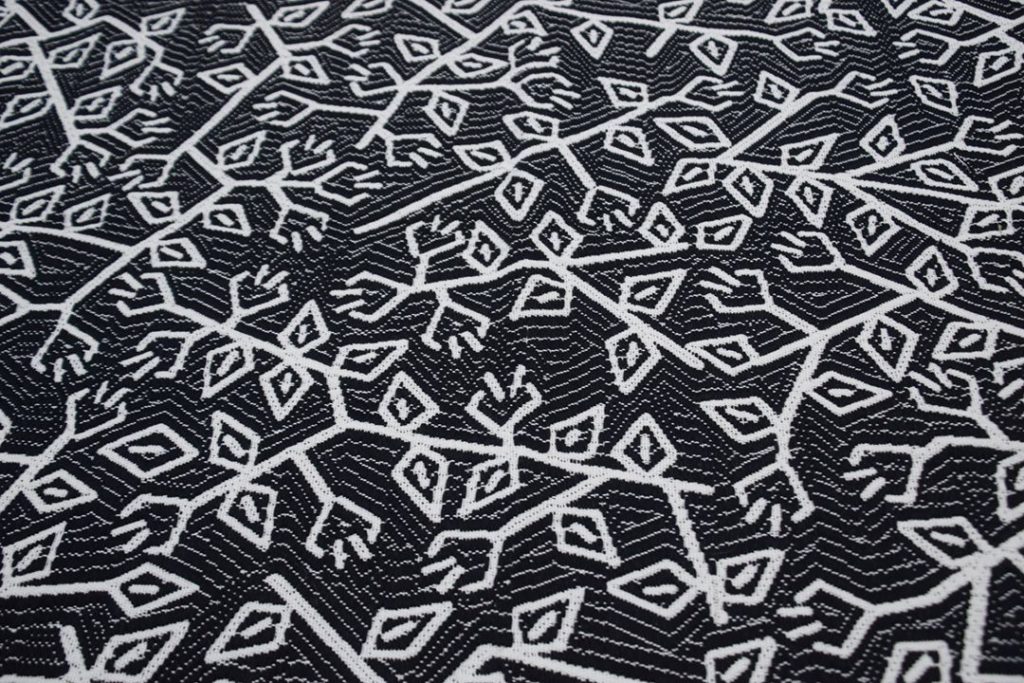
One of Carlo’s creations. The design reproduces religious motifs of the indigenous pagan religion of Sardegna in a contemporary carpet design.
This textile house specializes in contemporary products which – like the Sanna laboratory – can require the use of difficult to work with, non-traditional threads. The SARTAPP siblings are creative and they build on and innovate the classic, ancestral themes of Sardegna and the techniques native to Samugheo into the carpets and utilitarian wares they craft for their customers. An interesting commission required that they design labels for a winery’s three vintages. The label designs incorporated traditional Sardinian religious symbology into a modern theme.
The Laboratorio Tessile Artigiano Isabella Frongia
The Laboratorio Tessile Artigiano Isabella Frongia was our final ‘arte tessile’ experience. Founded by Isabella Frangia and her cousin Annamaria in 1995, the women work under the guidance of Isabella’s talented mother – Usanna Frangia. They specialize in ancient, local weaving techniques and designs. The laboratory fabricates unique creations for clients that incorporate the desires and needs of their customers with the demands of tradition – their textile art’s sacred mission.
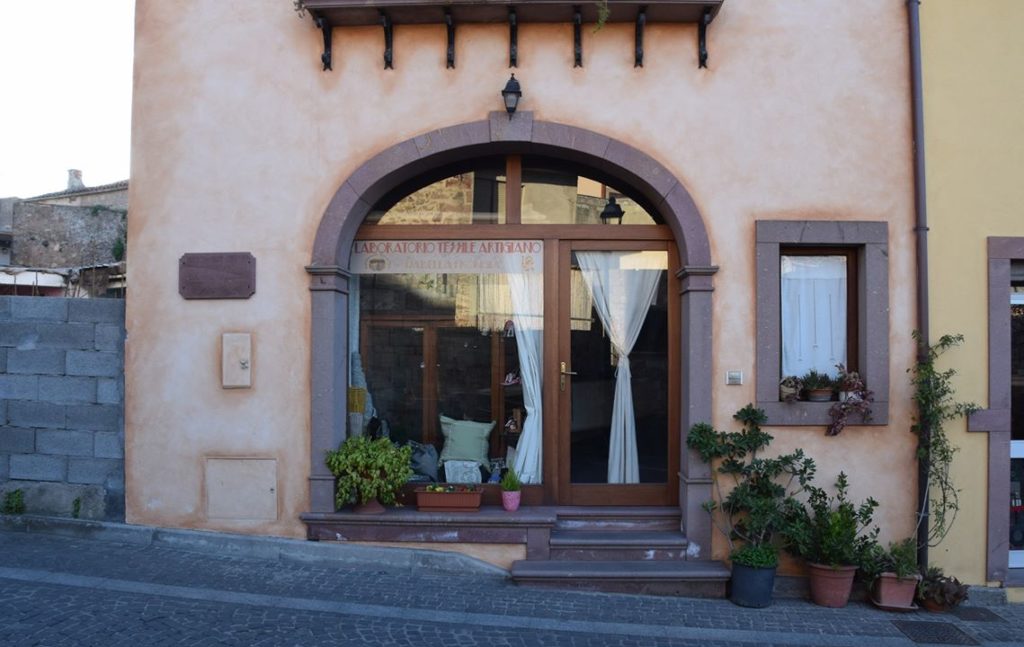
Laboratorio Tessile Artigiano Isabella Frongia 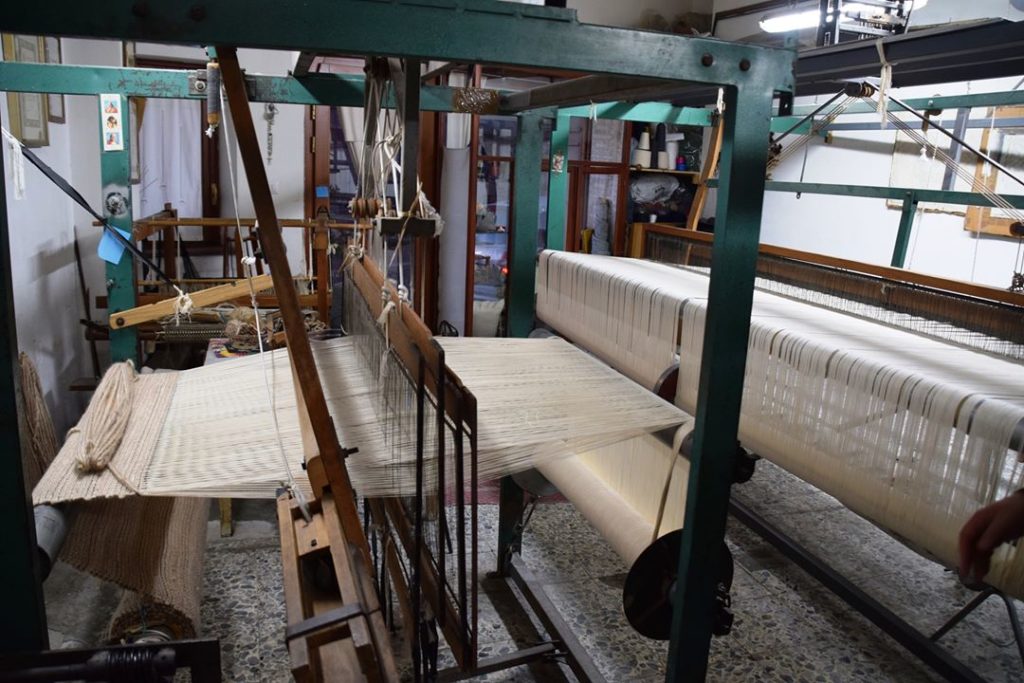
The lab is crowded with looms of different sizes! 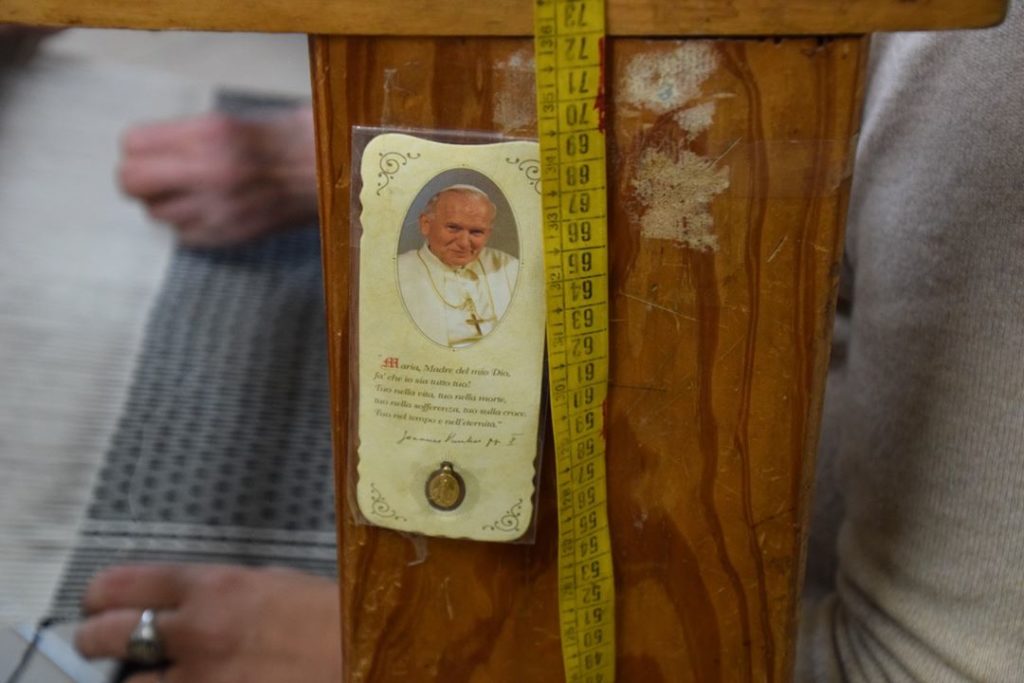
There are many images of saints and revered religious personages in the workshop.
We were all given the opportunity to try our hand at weaving by Usanna. Her strong hands – gnarled by age and made wise by her labors – were sure and swift. Her gifted weaving was a dream to watch. She was very patient with all of us and I truly enjoyed this visit and my efforts at adding a couple rows to the traditional cloth for bisacce. Of course, I am certain when we left that she restored the integrity of her cloth and design by removing the crooked and unevenly spaced patterns we made. Not only was my attempt at weaving fun, in the few minutes I tried I realized what a complicated task the textile craft is!
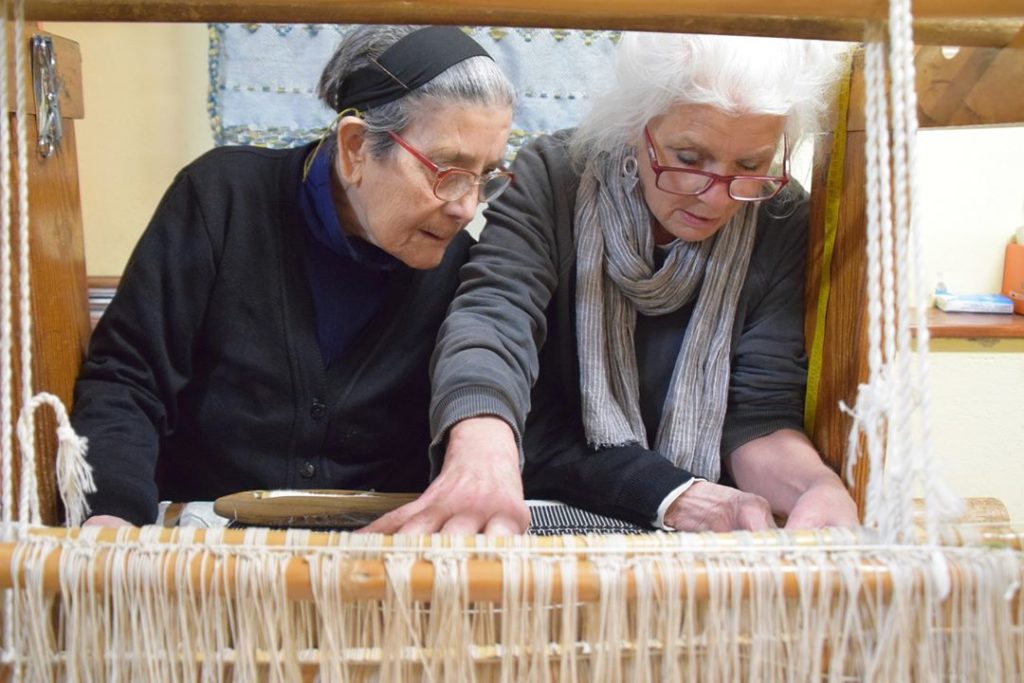
Sardegna sings the songs of the ancestors to the generations through the artists of Samugheo. Their wares offer both innovation – as rhapsody on symbolic themes and opuses fresh and new – and confirmation – via reincarnation of image and design – when they meld their native understandings of life, love, need, and religion with their threads. And the beauty of the productions snatches us – tourists and locals in parity with the experience.
I cherish my days in Samugheo and long to return to the island and the village to learn more about this unique Italian province and culture. I urge you to visit! The beaches of Sardegna may beckon but the entire island is rich in adventure and ancient culture living in its crafts, food, and people – especially the incomparable artisans of Samugheo!
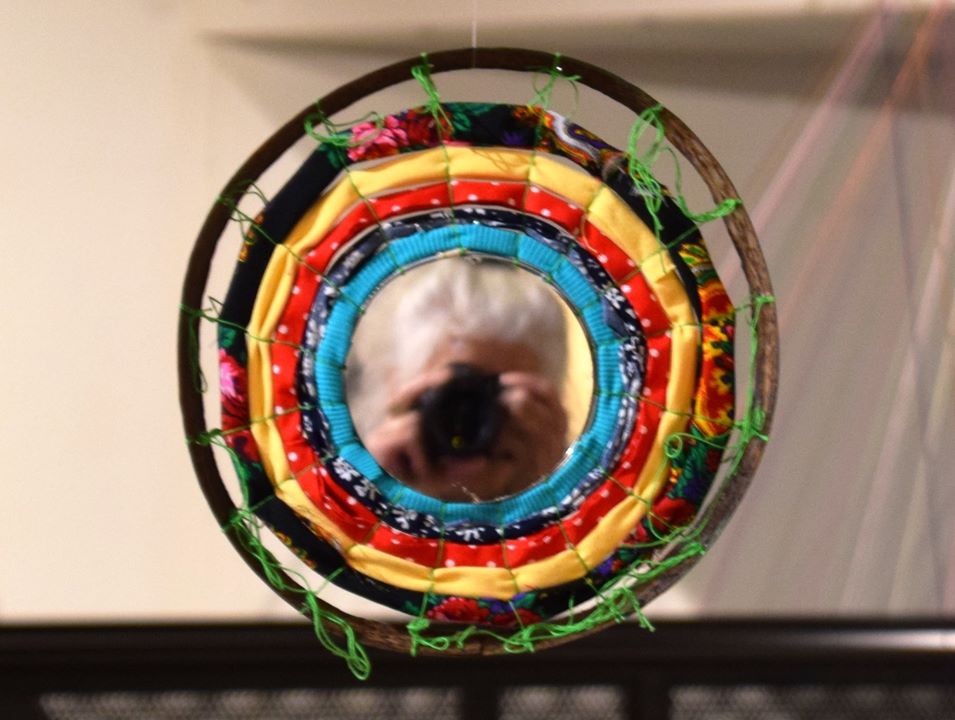
Virginia Louise Merlini
Italia Slow Tour US Ambassador
The travel diary on Virginia’s facebook diary

